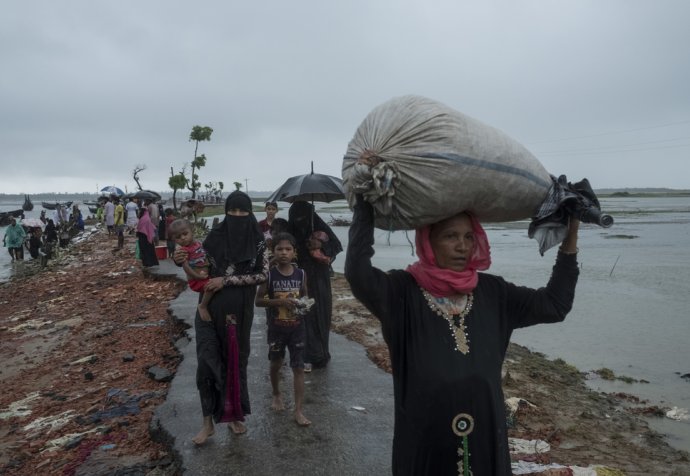Construction began at the beginning of February and, with no time to waste, lasted just two months. With capacity for 100 patients, the hospital was designed to respond to an emergency situation—the massive arrival of Rohingyas fleeing the violence in Myanmar that began on 25 August. The onset of the monsoon season will also make ensuring access to medical care in the camps extremely challenging. For these reasons, a semi-permanent facility was required. Each of its buildings is made of a metallic structure mounted on a concrete slab. The hospital has an emergency room, an intensive care unit, a medical analysis laboratory, inpatient departments for adults and children, a maternity department with a neo-natal care unit, an isolation unit for patients with infectious diseases and an intensive therapeutic feeding centre for severely malnourished children—of whom there are few, but whose numbers may well increase during the monsoon season.
Bangladesh: We've opened a hospital at the heart of a vast camp providing refuge to Rohingya refugees
MSF has opened a new hospital at the heart of vast Kutupalong-Balukhali camp providing refuge to some 700,000 Rohingya refugees in Bangladesh. Not hard to find, as it is on one of the many hills that form the landscape of Cox’s Bazar, its name says it all: “the hospital on the hill”.
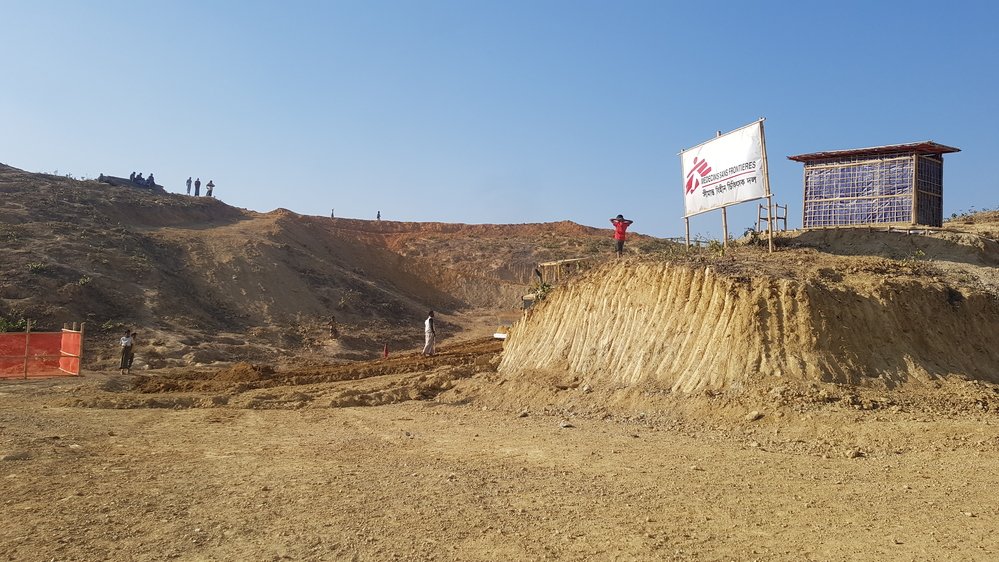
Earthworks to level the ground where the MSF hospital is due to be built. It was also necessary to plan roads and dig drainages. © MSF
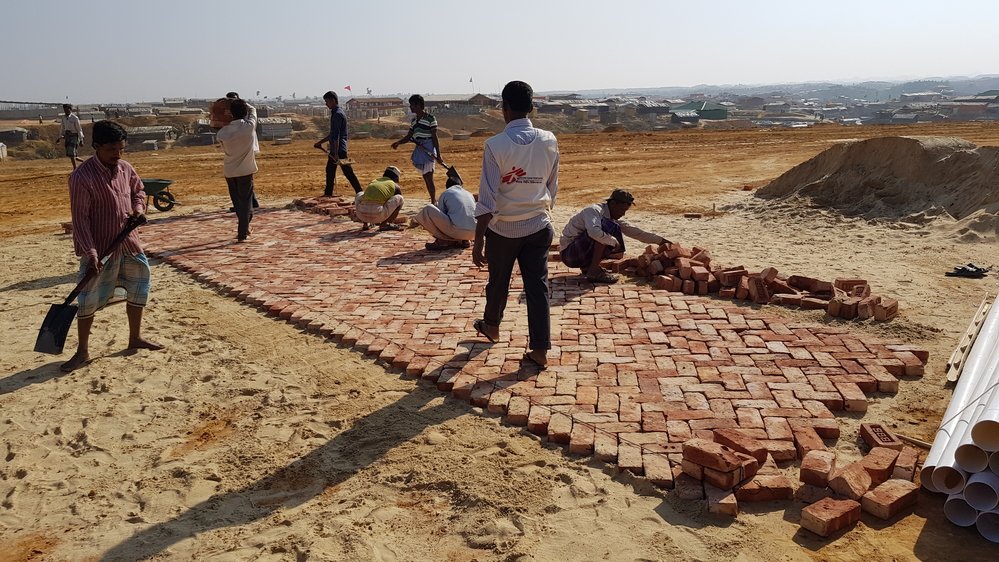
Construction site of the MSF hospital: bricks are laid along the roads to consolidate the sandy ground which can become very unstable during the rainy season. © MSF
Our teams at the hospital are going to be able to treat health problems common in refugee camps, such as respiratory infections and diarrhoeas. They will also handle emergency cases. These may be victims of sexual violence or patients suffering with trauma injuries or respiratory distress. When surgery is required they’ll be taken, once their condition has stabilised, to a hospital with an operating theatre. The hospital offers a wide range of medical services and family planning consultations and menstrual regulation services are available for women.
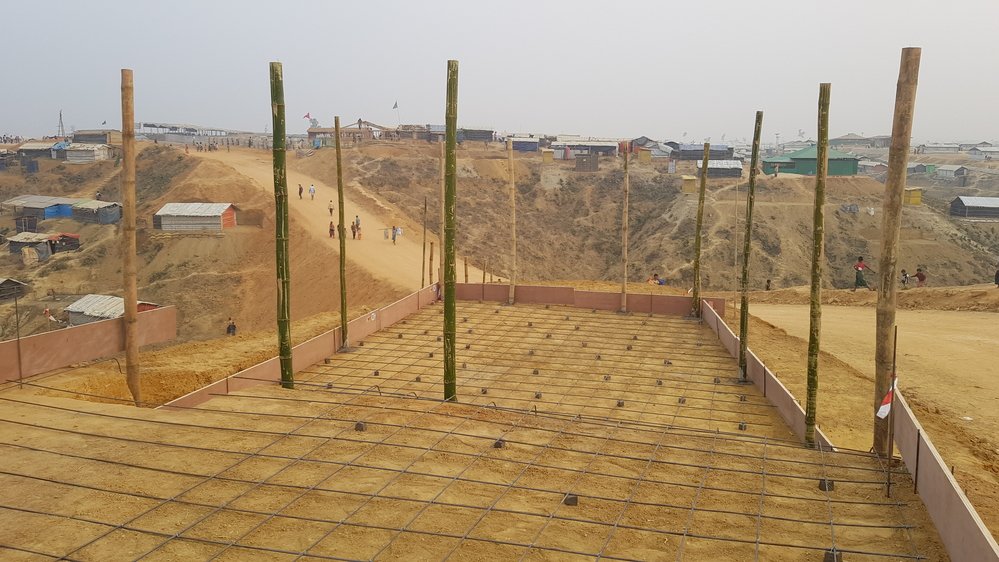
Construction site of the MSF hospital: laying of the concrete slab for the building due to house generators. © MSF
“We can also treat chronic diseases like diabetes, hypertension, chronic obstructive pulmonary disease and asthma, which is the leading cause of death among adults”, says Francesco Segoni, MSF’s emergency coordinator in Cox’s Bazar. “ It’s important for patients with chronic diseases to have access to secondary health care so that, when they need it, they can be given inpatient care.”
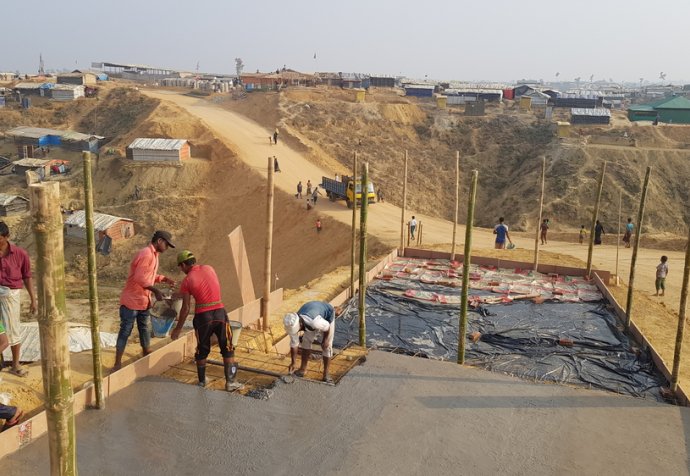
Construction site of the MSF hospital: laying of the concrete slab for the building due to house generators. © MSF
The hospital, that follows two other facilities MSF opened at the end of March and the beginning of April to offer wider access to secondary health care in the district of Cox’s Bazar, will be ready to handle epidemics like cholera and hepatitis E, which are common during the rainy season.
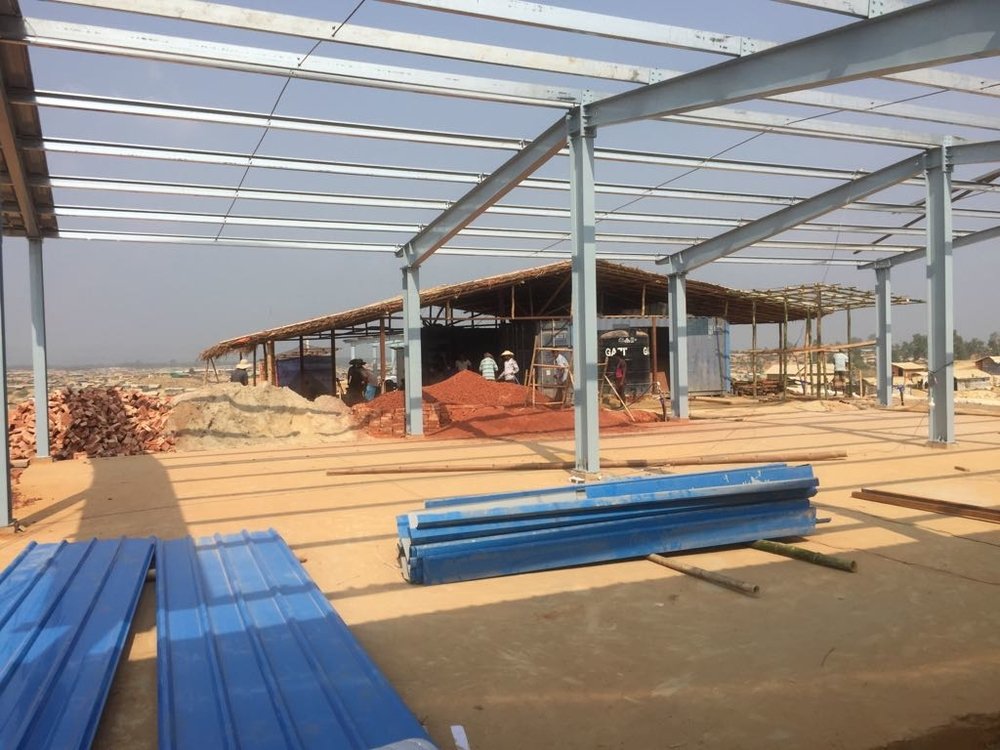
Construction of the MSF hospital: the steel structure was mounted on the concrete blocks. © MSF
“With the flooding and accumulation of stagnant water, water- and mosquito-borne diseases are all the more likely to spread because of the Rohingyas’ severely overcrowded living conditions and the very poor sanitation”, adds Francesco Segoni. Many latrines have been dug in flood-prone areas and lots of wells are quite shallow, which contaminates surface water. And the boreholes MSF has dug to a depth of over 150 metres, like the one supplying water to “the hospital on the hill”, are not enough to meet all the camp’s needs for clean water.
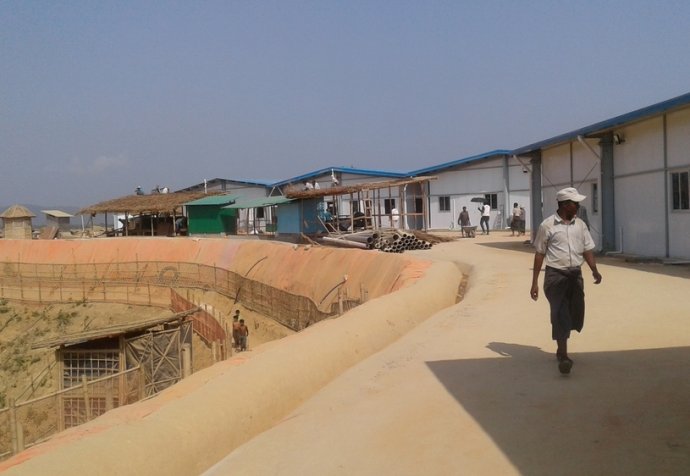
View of the MSF hospital. Works are nearing completion. © MSF


